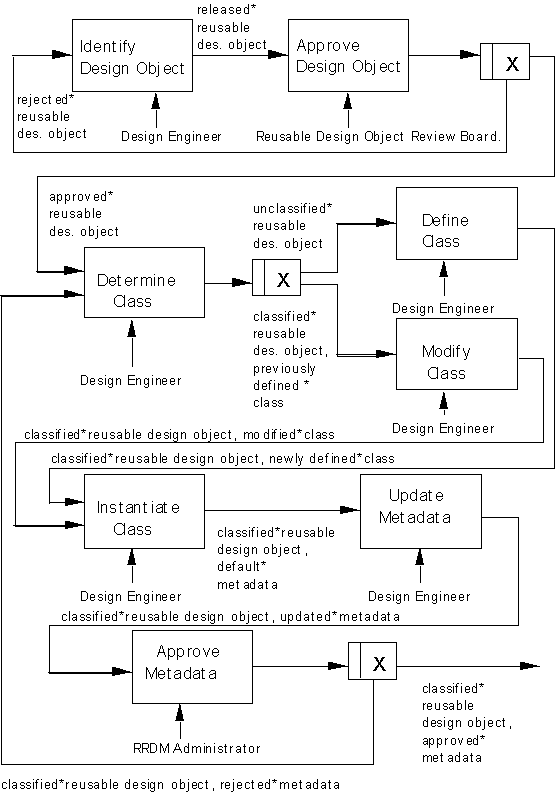Next: 4 The RASSP Reuse Classification Hierarchy Up: Appnotes Index Previous:2 Architecture of the RASSP Enterprise System
![]()
![]()
![]()
![]()
Next: 4 The RASSP Reuse Classification Hierarchy
Up: Appnotes Index
Previous:2 Architecture of the RASSP Enterprise System
The methodology developed for design reuse in the RASSP environment is composed of two areas: Generic processes were developed and modeled using the IDEF3 methodology for process modeling [AL_1992]. These models provide a foundation which organizations can customize and extend to implement specific reuse strategies. The process models have been captured in the "Domain Independent Reuse Methodology" document [Lockheed Martin_1996a]. In this section we provide a summary of the methodology and provide guidance on how the underlying processes may be adapted to meet a particular organization's needs. Additional information on the process modeling methodology is provided in the Process Modeling Application Note
The methodology document provides additional detail for each of the processes highlighted above. Adaptation of these processes may require integration and use of corporate standard taxonomies and engineering process improvement guidelines within the common vocabulary, the addition of corporate and domain-specific knowledge to the templates and methods to reflect cost, reliability, manufacturability, and other process information, for example. Customization of the generic Design-With-Reuse process may also include performing tradeoffs between designing from scratch versus modifying the selected design object, the addition of lessons-learned knowledge to the reuse repository, and so forth.
The default workflow for addition of reusable design objects to the RRDM is shown in figure 3 - 1 and represented in IDEF3 (Integrated computer aided manufacturing DEFinition) notation. The boxes represent individual activities in a process, and the links between the activities represent precedence relationships between activities. The links are annotated with information about the data that flows between two activities -- the state of the data and the type of data separated by a '*'. A junction box, represented by a box with a vertical line parallel to the left edge and an 'X' within the box, is used to model alternate paths within a workflow. The arrows coming into the bottom edge of an activity box indicate the mechanisms that are involved in the activity, usually the job classification of the individual(s) performing the activity. The workflow is implemented using the workflow manager of the RASSP enterprise framework and may be further customized by a RASSP administrator for a particular organization.
3.0 Design Reuse Methodology
3.1 Design-For-Reuse
The Design-For-Reuse methodology supports the identification of reusable design knowledge and related business and engineering information as well as its integration with the local reuse repository for enterprise-wide access. The major steps include:
3.2 Design-With-Reuse
The RASSP program goal for Design-With-Reuse is to facilitate maximum integration and use of existing design knowledge where feasible. The steps include:

![]()
![]()
![]()
![]()
Next: 4 The RASSP Reuse Classification Hierarchy
Up: Appnotes Index
Previous:2 Architecture of the RASSP Enterprise System